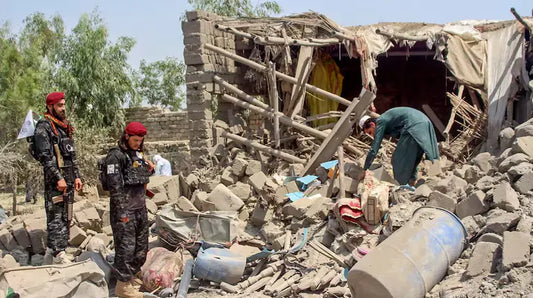India Accelerates Deployment of 52 Defence Surveillance Satellites Post Operation Sindoor

In response to insights gained from May 2025's Operation Sindoor, India is expediting the deployment of 52 defence surveillance satellites to enhance the monitoring of adversarial regions. The third phase of the Space-Based Surveillance (SBS) programme, sanctioned by the Prime Minister-led Cabinet Committee on Security in October last year with an allocation of Rs 26,968 crore, targets the completion of these satellite launches by 2029.
The Defence Space Agency, operating under the Integrated Defence Staff of the Ministry of Defence, is leading this initiative. The Indian Space Research Organisation (ISRO) is tasked with launching 21 satellites, while the remaining 31 satellites will be constructed and launched by three private firms. Current efforts concentrate on accelerating the timeline for deploying these satellites into low earth and geostationary orbits.
The SBS-3 satellite constellation is set to significantly boost surveillance capabilities over China, Pakistan, and the Indian Ocean Region. This will result in reduced revisit intervals and improved image resolution, facilitating the armed forces in detecting, tracking, and identifying potential threats prior to their proximity to Indian borders, thereby enhancing decision-making and situational awareness.
Simultaneously, the Indian Air Force is in the process of acquiring three high-altitude platform system (HAPS) aircraft. These unmanned pseudo-satellites are intended for prolonged intelligence, surveillance, and reconnaissance (ISR) missions in the stratosphere.
The lessons from Operation Sindoor highlighted the pivotal role of both domestic satellites like Cartosat and international commercial satellites in observing military activities during the intense India-Pakistan conflicts in May. Defence authorities emphasize the necessity of reducing the OODA loop—observe, orient, decide, act—to secure operational superiority.
India is also drafting a comprehensive military space doctrine and a satellite shield to counteract challenges posed by China's swiftly growing military space capabilities, which now comprise over 1,000 satellites with advanced ISR and anti-satellite functions.
Air Marshal Ashutosh Dixit, Chief of Integrated Defence Staff, recently underscored the strategic value of expanding India's surveillance reach deep into opposing territories, noting space as the ultimate high ground in contemporary warfare.
This accelerated satellite project represents a major advancement in India's defence space capabilities, ensuring improved vigilance and preparedness amid an increasingly contested and technologically sophisticated security landscape.



















